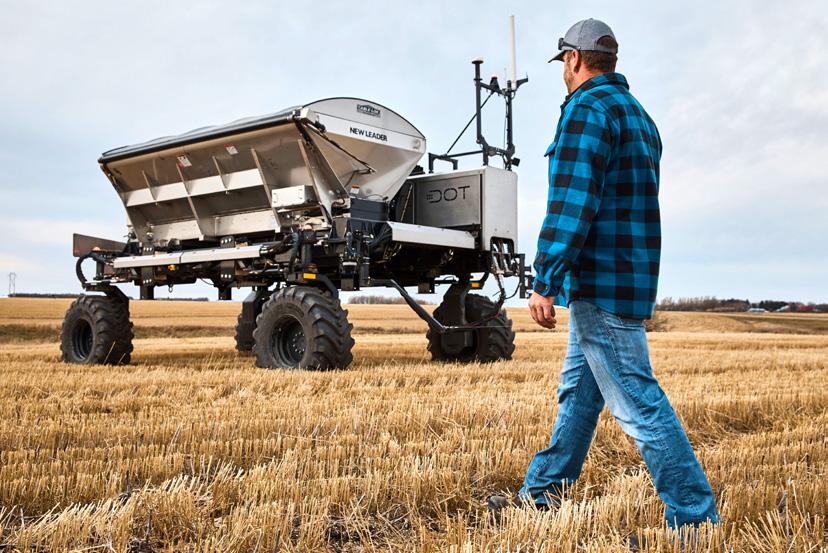SOIL HEALTH PRACTICES REVIVE SALINITY AREAS REGENERATING DEAD ZONES By Lura Roti for South Dakota Soil Health Coalition
W
hite desert is how Frederick farmer, Don Nickelson, used to describe the saline patches on his land. “Nothing would grow there,” says the crop and cattle producer.
Hitchcock farmer, Scott Hamilton understands. Saline patches began showing up on his land in the 1990s. “If nothing will grow, not even (the weed) kochia, you know the land is in pretty tough shape.” Although their approaches vary, both farmers discovered by implementing soil health practices, they were able to restore life to these former dead zones.
GEOLOGICAL ROOTS Although landscape, soil type and climate may differ, the root of salinity issues on the land today stem from a common source that dates back to geology 65 to 145 million years ago, explains Cheryl Reese, South Dakota State University Senior Lecturer in the Department of Agronomy, Horticulture and Plant Science. “Most of the interior of the United States, from Texas to North Dakota - including South Dakota – was covered by a shallow, in-land, sea.” She explains, shale a type of sedimentary rock, was deposited at the bottom of this sea for millions of years. “The shale contains salts because it was deposited in a marine environment,” Reese says. What remains today of this prehistoric sea are those salty shale deposits. The salts in this deposit are highly soluble in water. As the groundwater, water tables rise, due to increased precipitation, salts from this old marine deposit can seep to the soil surface and form white patches on the 24
surface of fields and pastures, often referred to as saline seeps. The location of a saline seep depends on a number of factors. These factors include how close the shale deposit is to the soil’s surface and how the water moves under the surface of the land. For example, if water percolating through the soil meets an impermeable soil horizon (layer) then water will be forced to flow along this border and potentially form a saline seep on the side of a hill.
LET MOTHER NATURE BE YOUR GUIDE Sometimes the solution is right in front of you. This was the case for Scott Hamilton. For years, he’d been trying to get crops to grow on some saline patches. But instead of progress, the patches increased in size. Then, one day he looked across the road. Just a few yards away, on pastureland, he noticed quite a few forages growing. “I thought, why am I fighting this? If plants are growing on that side of the road, why aren’t they growing on this side of the road.” He realized, that instead of working to get specific crops to grow, he would experiment with a variety of forages to see what would grow in saline soils. “In native prairie, there are up to 300 different species of plants in one spot,” he says. “So, if one plant can’t grow, another one does. That is what I wanted – to put together a blend that is diverse enough to work all the time.” Working with Millborn Seeds he began trying different blends and ratios until they came up with a diverse blend that worked: tall wheatgrass, AC Saltlander green Winter Issue 2020
SDSL











